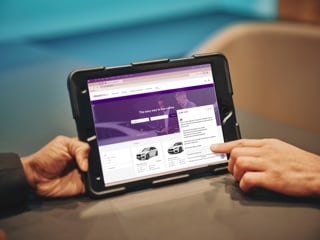Dealers should delete comments and block users on social media channels if they are malicious or unfounded, according to dealer management software company Pinewood.
The company says that, in its dialogues with dealers, the prospect of how to deal with unwanted comments is the one that makes dealers most wary of social media.
Chris Caines, Pinewood marketing executive, said: “Many dealers are, quite naturally, worried about what might be said about their products and services on the kind of open, sometimes anonymous, forums that social media provides.
“Certainly, it is something that requires consideration but is not really too different from dealing with complaints through conventional channels, except for the high level of visibility that technology such as Facebook or Twitter creates.
“The most important factor is to act quickly and be seen to be as professional as possible at all times. However, if comments appear to be malicious or unfounded, you should not be afraid to stand your ground by deleting the comment and blocking the user where this is possible.”
Pinewood’s guidance on dealing with comments on social media:
1. What does the comment mean?
Look closely at the comment being made about your dealership. Is it a generalised complaint about your service or something more specific? Is it about a recent incident or something that dates back some time? Why has the person chosen to complain through social media? All of these factors will affect your response.
2. Be seen to respond quickly
Speed is of the essence when dealing with customer complaints, even if initially you just make a short holding statement that take all matters of this type are taken seriously, and that the incident is being looked into.
3. Use the right tone
At all times, use a tone that is polite and constructive, even if it is clear that the person making the complaint is angry, confrontational or malicious. You must appear as professional as possible at all times.
4. Ask for more details
You need to decide whether the complaint is justified and how to respond to it. The best way to do this is to get more details from the person making the comment. Ideally, you should take the conversation offline – for instance by asking them to contact you by telephone or e-mail. This is better than playing out the whole customer service process through social media.
5. Where possible, close the dialogue
If you are able to resolve the issue to the customer’s satisfaction, ask whether you (or even they) can close the dialogue online. For example, finish the running Facebook status by stating, “We are happy to say that this issue has been resolved to the customer’s satisfaction.”
6. Be firm when needed
If the comment being made appears to be simply malicious or the customer refuses to engage with you, do not be afraid to take firmer action. You could consider removing the message from Facebook, for example, and blocking the user. If asked why, state that the issue was investigated and the complaint appeared to be unsubstantiated or could not be progressed. However, you would be happy to look again at the matter if more details can be provided.
Caines added: “It appears to be part of the background noise of social media that some complaints are inevitable but by acting decisively and sorting the real issues from those that have no substance, you can minimise their impact.”




















stephenjury - 14/05/2012 13:34
What about Twitter? You can not delete this! I think you should never delete a comment .... looks like you have something to hide